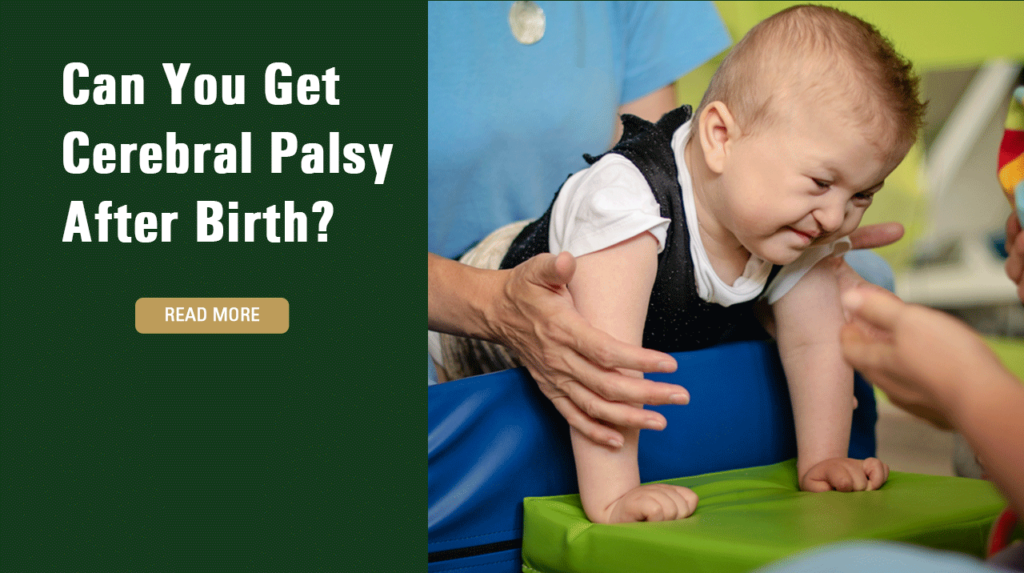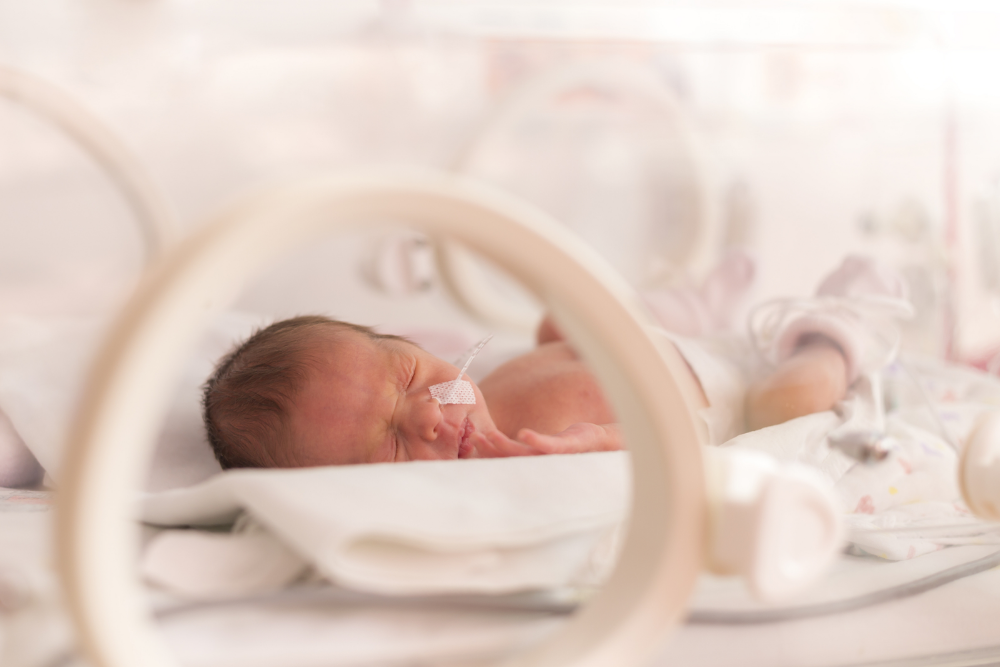Can You Get Cerebral Palsy After Birth?

Cerebral palsy is a lifelong condition that can cause physical and intellectual disabilities. While this condition might be diagnosed several years after birth, that does not mean that people can get the condition later in life. Here is what you should know about cerebral palsy and its causes from the Philadelphia Cerebral Palsy attorneys at Raynes & Lawn.
Can You Get Cerebral Palsy Later In life?
Cerebral palsy is not a condition that you can catch or get. You also can’t develop it later in life. Some people wonder, “Can you develop cerebral palsy later in life?” However, it’s not possible to develop cerebral palsy later. Instead, cerebral palsy is caused by birth injuries that occur during or shortly after childbirth. It is a non-progressive, permanent condition.
Causes Of Cerebral Palsy
Cerebral palsy is believed to arise from multiple causes. A small percentage of cerebral palsy cases are caused by birth injuries such as hypoxic-ischemic encephalopathy or birth asphyxia when there is a disruption in the blood and oxygen supply to the infant’s brain. This can result from multiple issues during a complicated delivery. If a fetus and mother are not properly monitored, the oxygen supply can be cut off for enough time to cause damage to areas of the baby’s brain.
Risk Factors For Cerebral Palsy
Some of the factors that might increase the risk of cerebral palsy include the following:
- Birth at less than 37 weeks of gestational age
- Low birth weight
- Blood clotting issues
- Rh incompatibility between the infant and mother
- Placental problems causing a reduced oxygen and nutrient supply to the fetus
- Maternal infection
- Fetal infection
- Prolonged disruption of the oxygen supply during birth
- Severe jaundice following birth
The following groups have shown a statistically greater risk of cerebral palsy:
- Premature babies
- Low birth weight babies
- Males
- Multiple births, including twins, triplets, quadruplets, etc.
Is Cerebral Palsy Hereditary?
It is rare for multiple people in a family to have cerebral palsy. Few children with cerebral palsy have siblings who also have the condition. When one twin has cerebral palsy, the vast majority of the other twins will not have the condition. There might be certain genetic factors that could place a baby at higher risk even though cerebral palsy does not appear to be a genetic trait that can be inherited from generation to generation. For example, a genetic predisposition to have premature births might be involved in a chain of events that could result in cerebral palsy. However, there isn’t a gene that codes for the condition in and of itself.

Cerebral Palsy And Birth Injuries
Cerebral palsy frequently results from injuries during or after birth. Birth injuries occur during the time surrounding birth, which is when babies are the most vulnerable to the types of injuries that can cause cerebral palsy. Doctors and other healthcare providers must carefully monitor mothers and fetuses during labor and delivery. If the fetus shows signs of fetal distress, the medical providers must promptly intervene to prevent birth injuries and potential cerebral palsy. Fetal distress can indicate problems with the supply of oxygen or blood to the baby’s brain and should be promptly addressed. For example, a doctor might need to perform an emergency c-section to address the issues and prevent injuries. In some cases, doctors might also improperly use forceps to facilitate vaginal birth and cause brain injuries that could cause cerebral palsy.
Why Is Cerebral Palsy Sometimes Not Diagnosed Until Later In Life?
Cerebral palsy ranges in severity and includes a broad range of muscle disorders. Some people who have mild cerebral palsy might not show symptoms for years while others with moderate to severe cerebral palsy might show symptoms close to birth. There isn’t a universal test for cerebral palsy. People who aren’t diagnosed with cerebral palsy until later in life might not have been screened for the condition earlier or might have symptoms that didn’t become noticeable until later. Even if a diagnosis isn’t made until later in life, however, the condition is present from the time of birth.
Importance Of Early Intervention
Early intervention is important to help improve a child’s functioning and quality of life. When children with cerebral palsy are correctly diagnosed, rehabilitation and physical therapy might help to improve their motor and cognitive functioning and improve their prognoses. There isn’t a cure for cerebral palsy. Instead, it is a lifelong condition that can’t be cured. However, it can be treated. Early intervention and a good treatment plan can significantly improve a child’s expected outcomes. While cerebral palsy is a permanent condition, it won’t get worse over time. It is not a progressive condition. Since it isn’t progressive, you should be able to work with your child’s doctor to create a treatment plan for each stage of your child’s life, including infancy, early childhood, school-age, and adulthood. Creating a comprehensive treatment plan can help ensure your child has the necessary professionals and supports to have a more fulfilling life.
Talk To Raynes & Lawn
A cerebral palsy diagnosis can be devastating for families. If your child has been diagnosed with cerebral palsy, the condition might have resulted from birth injuries caused by the negligence of a medical professional during or shortly after childbirth. By working closely with your child’s pediatrician and other doctors, you can create a treatment plan that will provide for early intervention. This can help to improve your child’s functioning and wellbeing. The treatment of cerebral palsy can quickly become expensive because of the extensive rehabilitation and physical therapy that might be necessary. If you think your child’s cerebral palsy might have been caused by negligence, you should talk to the attorneys at Raynes & Lawn. We can review your case and provide you with an honest assessment of its legal merits. If we agree that negligence likely occurred, we will help you pursue compensation to cover your child’s treatment and other losses. Contact us today at 1-800-535-1797.

For the general public: This Blog/Website is made available by the law firm publisher, Raynes & Lawn, for educational purposes. It provides general information and a general understanding of the law but does not provide specific legal advice. By using this site, commenting on posts, or sending inquiries through the site or contact email, you confirm that there is no attorney-client relationship between you and the Blog/Website publisher. The Blog/Website should not be used as a substitute for competent legal advice from a licensed attorney in your jurisdiction.
For attorneys: This Blog/Website is informational in nature and is not a substitute for legal research or a consultation on specific matters pertaining to your clients. Due to the dynamic nature of legal doctrines, what might be accurate one day may be inaccurate the next. As such, the contents of this blog must not be relied upon as a basis for arguments to a court or for your advice to clients without, again, further research or a consultation with our professionals.
